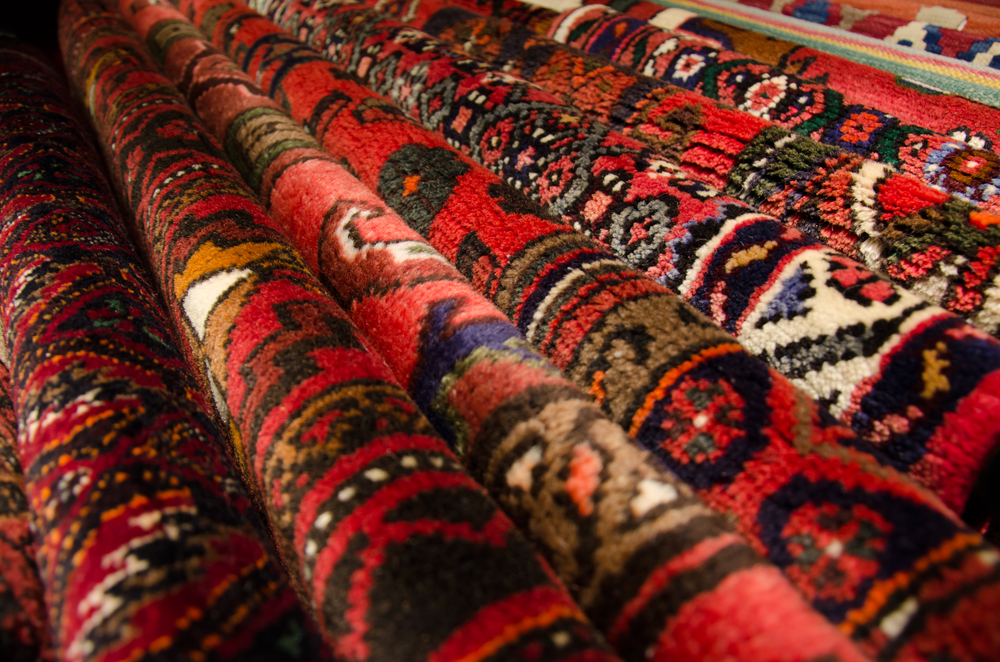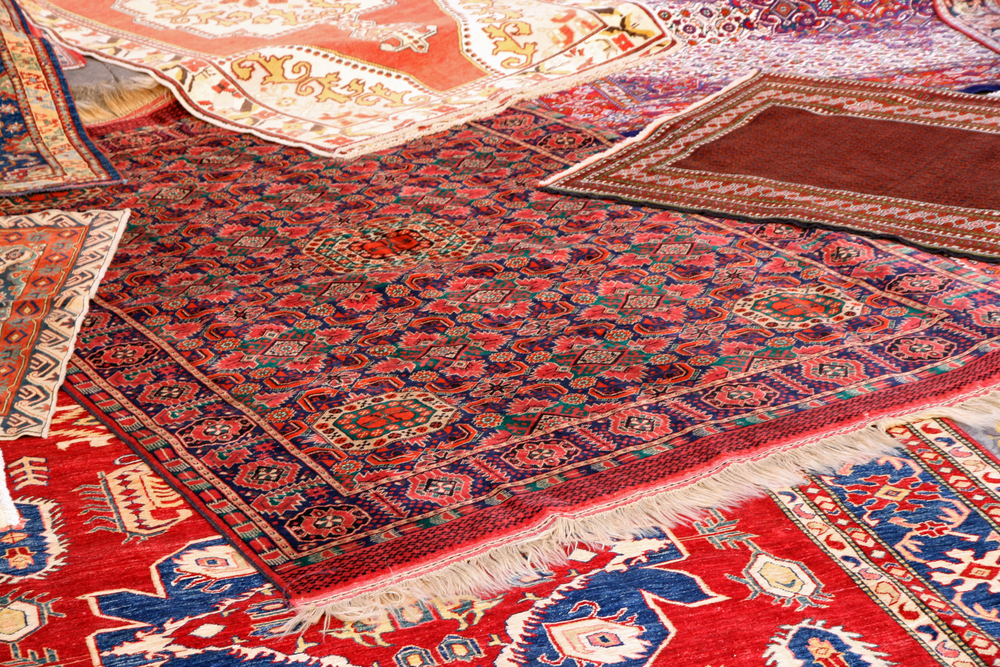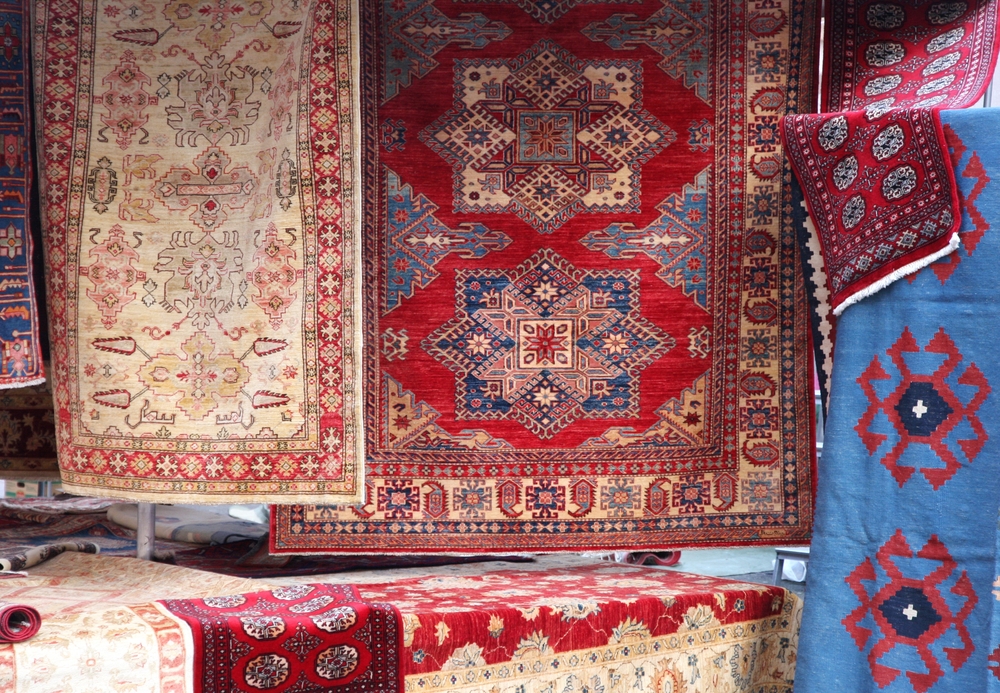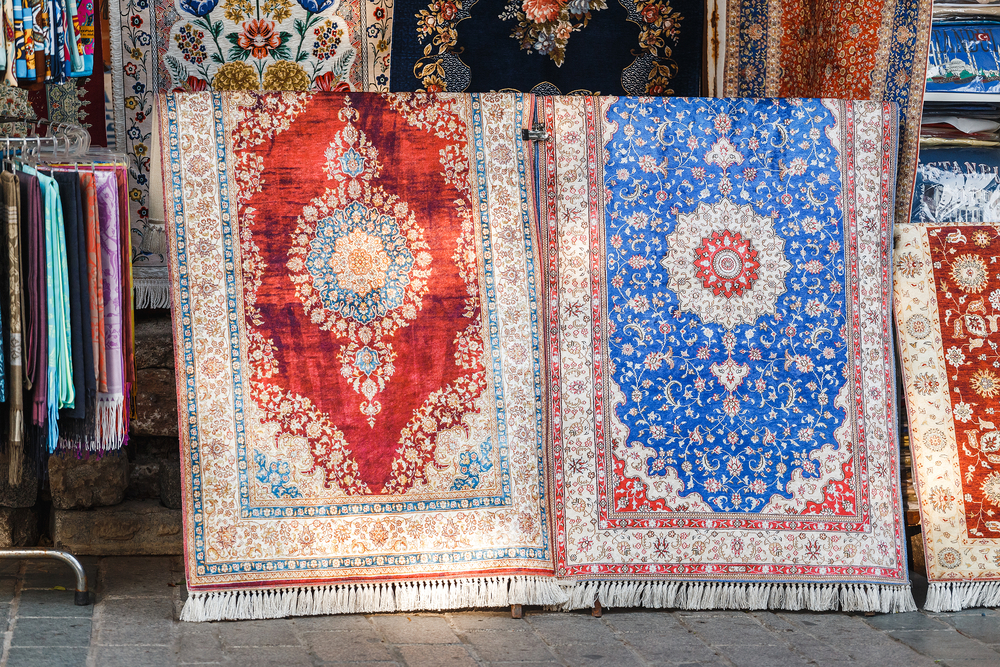There is a wide range of rugs on the market at the moment, offering a variety of options for all budgets and home designs. However, one rug is still pried above most and that is the Persian rug. Join the team at Woods Rug Laundry as we discuss the Persian Rug.

What is a Persian Rug?
Persian rugs were originally woven by nomadic tribes, in towns and even in royal workshops, and they stand out because of their elaborate designs. Because of this the designs represent different yet simultaneous lines of tradition. Further, these rugs are prized for their elaborate design and colours.
Modern Persian rugs are characterised by the revival of natural dye use and the reintroduction of traditional tribal patterns. However, they also feature the invention of modern and innovative designs that use the same centuries old techniques. Hand woven rugs are especially prized as artistic pieces.
Most Persian rugs refer to pile woven rugs, however flat woven rugs and embroidered tissues are also part of Persian rug traditions.
What are Hand-Knotted Persian Rugs?
Persian rugs are generally hand knotted in an asymmetrical fashion and open on one side. This means there are no gaps and the knots are less bulky than Turkish knots. As a result, Persian knots can create a more intricate design with a lush pile. It also creates extreme precision for floral patterns and multi-layered borders.
Some Persian rugs also use a technique called Turkish knots. These are symmetrical and can be identified with two small bumps within one knot on the back of the rug.
You can tell if your rug is hand knotted by looking at the bottom of the rug. If the bottom is an exact mirror of the top of the pile, the bottom is soft and made of the same material as the pile, and you can count the knots per square inch, then it is likely hand knotted.
The fringe should also be part of the construction, not sewn or glued on.
Hand tufted rugs, however, will generally have a glued on fringed and will have a piece of canvas or cotton added to the bottom of the rug.
Synthetic rugs generally have a hard, plastic backing and a sewn or glued on fringe.
It is important to remember that the terms handmade, hand-loomed and hand-tufted are not the same as hand-knotted.

What are the Different Types of Persian Rugs?
There are a wide variety of different Persian rugs to choose from. Some of these include:
Tabriz Rugs
These rugs originate from Tabriz, which is the capital city of Azerbaijan. It is one of the oldest rug weaving centres in the region. Further, they are known as high quality wool or wool-silk rugs and feature a cotton or silk warp. Antique Tabriz rugs are incredibly valuable and can only be found in private collections or museums. They also generally feature florals, trees, hunting scenes and teardrop medallions.
Heriz Rugs
These rugs are characterised by their bright, vibrant colours and bold patterns. They are easy to identify and generally feature a large medallion in the centre. Heriz also feature a double or triple outline and large corner details. They are prized for being highly durable.
Kashan Rugs
Kashan style rugs feature an ornately patterned floral field with a medallion and corner pattern. The colours are generally designed in a combination of deep blues, rich reds and ivory featuring splotches of yellow, green and orange.
Gabbeh Rugs
Traditionally woven by Qashqai and Luri weavers in the Zagros Mountains, the tribal influence is evident in their design. They are made using local, hand spun wool, making them thick and coarse. Designs tend to be simple and woven on a plain field of colour. Further, only natural dyes are used and these are mostly orange, yellow or red.
Isfahan Rugs
These silk and wool rugs are designed to be balanced and symmetrical. They typically consist of one indigo, rose or blue medallion in the middle of vines on an ivory background.
Nain Rugs
These rugs are high quality with fine wool and a high knot count. The patterns are intricate and consist of blue or green intertwined branches with little flowers on a white or ivory background.
Mashad Rugs
Mashad rugs generally feature a single, large Shah Abbasi medallion in the centre. The backgrounds are elaborate and filled with floral motifs. They are generally large with a wool pile and a cotton foundation.
Balouchi Rugs
These rugs come from a nomadic tribal origin and are generally smaller in size. They feature geometric patterns and are woven with sheep wool dyed blue or dark red. The edges generally use camel or goat hair in beige or brown.
Qum/Koum/Kom/Kumm/Qhum/Ghom Rugs
Despite their very many different names, these rugs are all woven in the Quam province of Iran. Of extremely high quality, they are tightly knotted with an incredibly luxuriously pile of silk or cotton. The intricate designs include flowers, medallions, birds, gardens and hunting scenes. Colours include blue, red-brown or orange and always feature turquoise.

What is a Persian Rug Made From?
In the case of most Persian rugs, the pile is made of sheep wool. The characteristics and quality vary depending on the breed of the sheep, pasture, climate and how the wool is shorn and processed.
Cotton generally forms the foundation of the wefts and warps of the majority of modern rugs. Nomadic tribes that couldn’t afford to buy cotton used wool for the entirety of the weaving process. Cotton, however, can be spun more tightly than wool and tolerate tension better. As a result it is better for larger rugs and makes them lie flatter while wool can tend to shrink.
Silk was mostly used in representative carpets or as silk warps, and rarely as silk was – and remains – an expensive material. Further, it was used to highlight special elements of the design. Silke pile is exceptionally fine, short and used in elaborate designs. It is mainly used in wall hangings as they are not very resistant to stress.
What is the Difference Between a Persian Rug and an Oriental Rug?
So what, exactly, is the difference between a Persian rug and an Oriental rug? Oriental rugs are broadly constructed in China, India, Egypt, Pakistan, Iran and Afghanistan. Persian rugs, however, are specifically woven in Iran and are generally of a higher quality.
Oriental rugs have different sub-categories, of which Persian rugs are one of them, however Persian rugs have a long-established history in the traditional skills of the people of Iran. Further, they showcase the distinctive expertise of handcrafted rug making that is specifically native to Iran.

How Do You Clean a Persian Rug?
Persian rugs are woven in such a way that little scale like pockets can form. These pockets can hold an incredible amount of dirt that is easily hidden by the pile. As a result, your rug may be packed with dirt long before it shows on the pile. You need to vacuum them regularly and have them booked in at least once a year for a professional deep cleaning, if not sooner.
Because Persian rugs can use a range of different dyes it is important to never use off-the-shelf cleaners on your rug. Otherwise you run the risk of causing irreparable dye run damage and destroying the fibres.
And spills that occur on your rug should be carefully blotted, without rubbing the stain deeper into the pile. Remove any excess liquid or solids then take your rug to a professional as soon as possible.
Do you have a Persian rug that needs cleaning? Contact the team at Woods Rug Laundry today for more information on our professional rug cleaning services!
